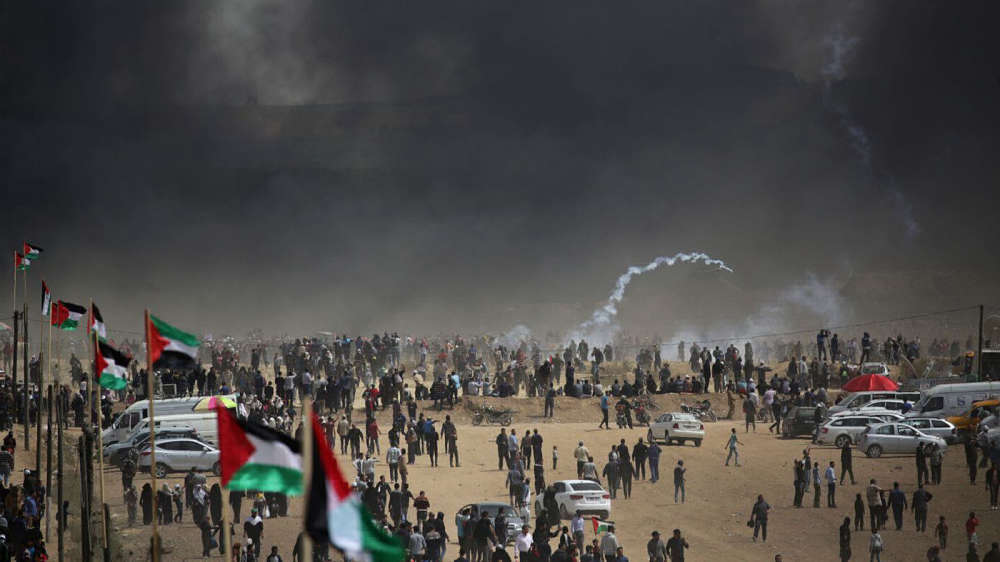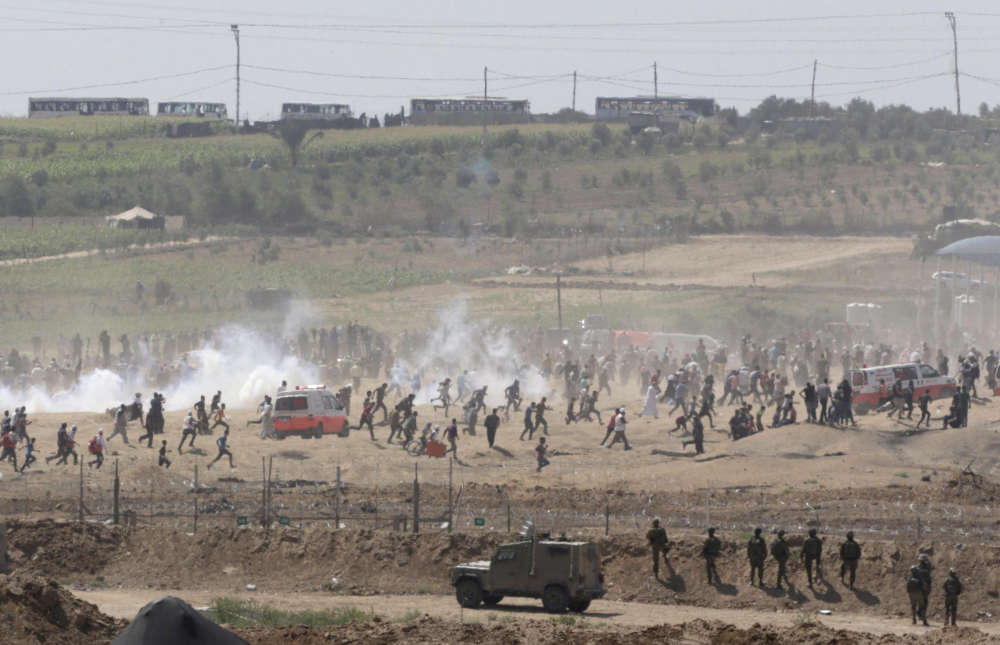Israel has maintained its occupation of the Gaza Strip for 51 years. Throughout this long period of time, we have seen a systematic degradation of human rights that worsened most seriously after Israel began its ongoing blockade of Gaza by air, land, and sea, which has been in force for the past 11 years. In particular, the targeting of unarmed civilians, although protected under international law, has recently been the prime example of the perpetuation of Israel’s grave breaches of human rights.

In 2006, national elections in the occupied Palestinian territory took place, and Hamas won the great majority of seats in the Palestinian Legislative Council. In 2007, Hamas took over Gaza, an event to which Israeli authorities responded by placing the coastal enclave under a suffocating blockade unseen since 1967. This blockade, a form of collective punishment that is illegal under international law and the Fourth Geneva Convention, entails severe restrictions on the movement of individuals and goods, causing outstanding economic paralysis. Unemployment rose to 46.6 percent in the Gaza Strip, with the unemployment of youth exceeding 60 percent, that of women over 85 percent, and that of graduates close to 100 percent. The poverty rate has risen to 53 percent and that of food-insecurity to 57 percent, leaving Palestinian families in Gaza significantly dependent on aid and relief services.
It would not be any exaggeration to say that Gaza has de-developed into what it was 50 or 60 years ago.
The restrictions on movement of goods have also crushed Gaza’s export and import industry. A prominent consequence of these restrictions has been the inability to reconstruct houses destroyed during Israel’s Protective Edge Operation in 2014. At the end of 2017, only 53 percent of the houses that had been completely destroyed were reconstructed, further compounding housing problems in the Gaza Strip. An assessment of current housing needs reveals that 102,000 new residential units are required and 24,000 more must be reconstructed; 36.2 percent of families reside in homes with an area that is less than 120m2, and 53.6 percent of them live in a residence with one or two bedrooms. Another key result of movement restrictions is the denial of access to necessary medical care. Half of the patients who need urgent medical treatment at hospitals outside Gaza, including cancer patients, have been barred from leaving Gaza. In 2017, the World Health Organization reported that 54 percent of Gaza patients who applied for Israeli permission to receive necessary medical care outside Gaza either did not receive a response or had their applications denied.
Israel unilaterally withdrew from Gaza in 2005, and has deployed its forces across the surrounding fence. This redeployment has since proven to be a well-calculated plan to fragment the territorial unity of Palestinians and an attempt to throw (the burden of) Gaza onto Egypt, in order to find the time and concentration to expand settlement activity in the West Bank. In so doing, Israel is torpedoing the Oslo Accords, which, if there were any merit to the deal, mandates that the Gaza Strip and the West Bank be considered a single territory whose unity and integrity are to be preserved. Indeed, the withdrawal has evolved into a perfected plan by Israel to put a theoretical and practical end to the two-state solution. On the ground, Israel still occupies Gaza to maintain this status quo; it controls all of Gaza’s allocated waters and air space, its civilian and commercial crossings, its supply of electricity, telecommunication, sewage removal, and other major services such as population registry and, on behalf of the Palestinian Authority (PA), tax collection. Given these facts, the legal position of Gaza remains the same: part of the occupied Palestinian territory.

Accelerating the aggravation of living conditions in Gaza, Israel launched three military operations in less than six years, killing civilians and causing enormous destruction of civilian properties, ranging from schools and mosques to hospitals and water installations. Much of this destruction amounts to war crimes and to crimes against humanity, as stated in the conclusion of the United Nations Fact Finding Mission on the Gaza Conflict, also known as the Goldstone Report, commissioned to investigate the alleged violations of international law in Operation Cast Lead in 2008 and 2009.
In 2007, when Hamas illegally controlled Gaza, the PA asked its civil and security employees to stop going to their workplaces as a way to delegitimize and undermine the ruling of Hamas. After 11 years of this internal division, including many failed attempts at reconciliation, the situation in Gaza has only grown worse. In March 2017, the PA took measures against Gaza, including the delay and cuts, by 30 to 60 percent, of salaries of public-sector employees and the forcing of 29,500 employees into early retirement.
The humanitarian crisis that strikes each of Gaza’s sectors is not an environmental disaster but one that is absolutely man-made. It is the outcome of political hegemony systematically practiced by Israeli authorities against Palestinian citizens and resources.
It is in this most dire context that Palestinians have sought to organize the Great Return March demonstrations, a series of peaceful protests joined by the various segments of Palestinian society. In response to this protest, Israel has deployed its forces, including sharpshooters, to police unarmed demonstrators while also targeting journalists and paramedics. From the start of the Great Return March on March 30, 2018, 135 Palestinians have been killed, of them 104 in protests, including 15 children, two journalists, two paramedics, and three persons with disability. Another 7,410 people have been injured, including 1,313 children, 271 women, 47 paramedics, and 64 journalists – of them 3,835 were hit by live fire. The facts on the ground confirm that these casualties did not pose a threat to the safety of Israeli soldiers since they were shot often with the intention to kill and/or maim. Statements by Israeli political and military leaders, coupled with these facts, clearly show that the goal of using lethal and excessive force is to inflict as much harm as possible on ordinary Palestinians joining the demonstrations. One such statement was posted on the Twitter account of the Israeli army’s spokesperson: “…Nothing was carried out uncontrolled; everything was accurate and measured, and we know where every bullet landed.”
The key word to alleviate the crisis in Gaza is “accountability.” It is the very absence of accountability and the very continuity of Israel’s enjoyment of impunity that perpetuate human rights violations. As long as those who have ordered and executed these violations are not held accountable, the worst is yet to come, and the human rights of innocent victims will continue to be sacrificed.
Article photos courtesy of the author.


